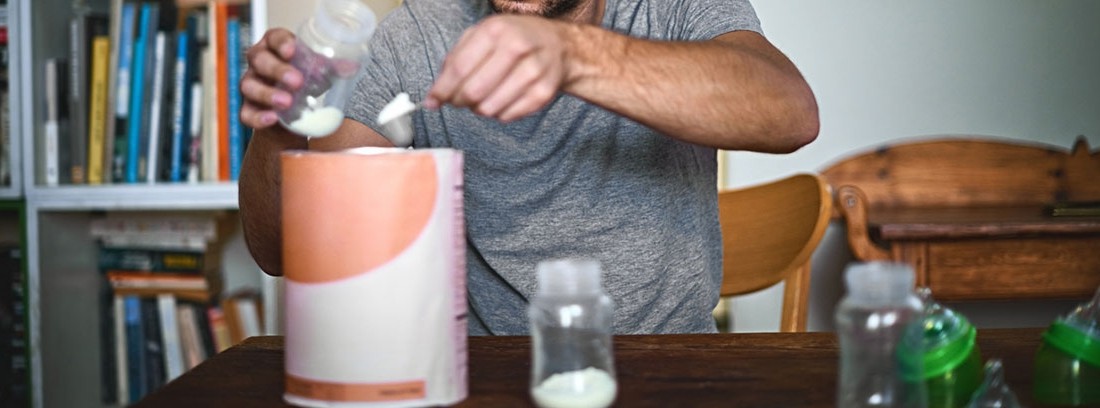Artificial lactation techniques

To feed your baby formula milk we need bottles and nipples. Formula milks can be liquid (ready to drink) or powdered (they require preparation with water and are cheaper).
Powdered milk must be prepared with water. It is recommended that the water be bottled and of weak mineralization (with few mineral salts).
The milk can be prepared with water at room temperature or warm (body temperature, about 37ºC). It is not necessary to boil the water, if we use bottled water.
Bottle preparation
Beforehand, we have to wash our hands well. Normally for every 30 ml we have to add a level scoop of powdered milk. Dilute bottles (with fewer milk scoops) or highly concentrated (adding more scoops than recommended) should not be prepared as they can cause health problems for the baby.
We will shake the mixture well so that there are no lumps and we will always check the temperature (warm, not hot) by pouring a few drops on the wrist.
It is not advisable to leave the bottles prepared in advance, as they can become contaminated. For the same reason, the milk from a bottle that the baby has not finished in a previous feeding should not be reused.
If you are going to be away from home for a few hours, it is best to carry the water and the powder separately, not to carry the mixture made from home.
Bottles and teats
It is not necessary to sterilize the bottles or other preparation utensils, with an exhaustive cleaning with soap and hot water, or dishwasher, it is enough.
There are different types of bottles and nipples, we have to take into account the preferences of the baby. The bottles can be made of glass or plastic. When the baby begins to want to take the bottle, it should be safe and that it does not break. The nipples can be made of silicone or rubber, they vary according to the age of the baby and each commercial house manufactures them in a different way. Silicone nipples should not be used when your child has teeth as they can bite and break them. It should be borne in mind that the hole in the nipple must not be too small or too large to allow a suitable flow of milk for the baby to come out.
Baby placement
During the first months, baby feeding is very frequent, so we must try to make it a pleasant moment for both of us. The baby must be comfortable, in a quiet environment with dim light and no loud noises.
We have to place ourselves comfortable, with a straight back and with the arm with which we are going to hold the baby resting on a cushion. We must place the baby slightly incorporated to avoid choking. Do not give the bottle stretched out in the crib.
It is highly recommended that you change your baby's arm at each feeding (naturally this is what is done with breastfeeding).
When the baby begins to suck on the nipple, hold the bottle so that the milk fills the entire nipple and thus prevents the child from swallowing air.
It is highly recommended that you pass gas after feeding (burp).
(Updated at Apr 15 / 2024)